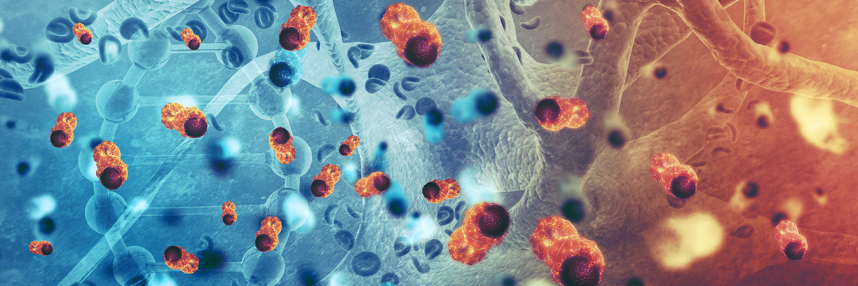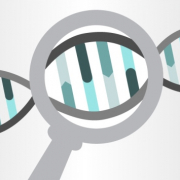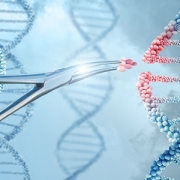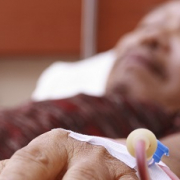NICE recommendations broaden patient access to cancer drug olaparib
The use of the targeted therapy has been expanded to include certain types of breast, prostate, ovarian, fallopian tube and primary peritoneal cancers
In the past nine months NICE has published three recommendations for the drug olaparib, which will increase access for patients with certain types of cancer. The first two recommendations, published in May 2023, were to make it an option for adults who are affected by metastatic prostate cancer or certain breast cancers with BRCA1 or BRCA2 variants.
The latest recommendation is for olaparib to be prescribed alongside another targeted therapy, bevacizumab, for maintenance treatment of advanced high-grade epithelial ovarian, fallopian tube and primary peritoneal cancers, whose cancer at least partially responded to first-line platinum-based chemotherapy with bevacizumab and has BRCA mutations or other genomic changes affecting DNA repair.
“We know how important it is for people with these types of cancer to have more treatment options that enable them to maintain or improve their quality of life,” said NICE’s director of medicines evaluation Helen Knight.
We explain how and why olaparib works and why genomic testing can help ensure that the right patients receive it.
The importance of DNA repair
For growth and repair, our cells need to divide. This is usually tightly regulated by a complex network of interactions between genes and hormones. Cancer occurs when a cell starts dividing uncontrollably.
Generally, the DNA in a particular cell must accumulate changes in the genes that normally regulate cell growth and division before it can break free of the regulatory mechanisms and become cancerous.
DNA damage can accidentally happen when cells divide normally or as a result of external factors, such as radiation, viral infections or chemicals like nicotine. However, the body has mechanisms for fixing these breaks so that they do not accumulate in cells.
BRCA1 and BRCA2
The BRCA1 and BRCA2 genes both encode proteins that are involved in repairing damaged DNA through a specific pathway called homology-directed repair (HDR). Most people have healthy versions of these genes, which help prevent cancer.
In people with a BRCA variant, more DNA breaks will go unrepaired. While many will be harmless, the chances of a single cell accumulating a set of changes that lead to cancer are higher. This is why people with BRCA variants are more likely to get cancer – but not all do.
Genomic therapies as intervention
Olaparib is a PARP inhibitor. PARP inhibitors are a class of targeted cancer therapies that take advantage of the defective HDR repair pathway.
They work by inhibiting an enzyme called PARP (poly-ADP ribose polymerase), which is important in a different DNA repair pathway called base excision repair. By stopping the cells from using this alternative pathway, the cancer cells have no DNA repair capability and as such accumulate unsurvivable levels of DNA damage and die.
Due to this mechanism, PARP inhibitors like olaparib can be very effective – but only in cancers where the HDR pathway is already compromised. This is why knowing the genomic characteristics of a patient’s cancer is so important.
As NICE’s committee concluded: “Having a targeted treatment for homologous recombination deficiency (HRD)-positive cancer, which affects around 50% of people with advanced ovarian cancer, is of great value … the continued availability of olaparib with bevacizumab as a first-line maintenance treatment could extend periods of remission and improve quality of life.”
- If you’d like to learn more about the National Genomic Test Directory, how to read a genomic test report and more, enrol on our latest MOOC (massively online open course), ‘Genomics In The NHS: A Clinician’s Guide To Genomic Testing For Cancer (Solid Tumours)’. NHS staff can join using this link for a free course upgrade.









